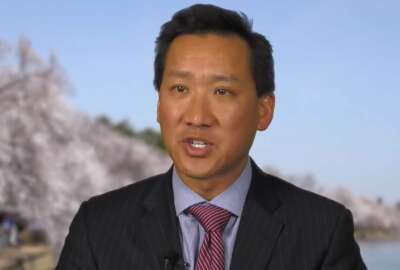When people close in on their retirement date many become anxious about life after a steady, biweekly paycheck. The old Civil Service Retirement System provided a much more generous pension/annuity than the Federal Employees Retirement System, which covers most working feds. So what to do?
We asked John Grobe, a former fed and benefits specialist, to crunch some numbers — the numbers you need to know before you retire. Grobe will be our guest today on our Your Turn radio show, which airs 10 a.m. EDT on www.federalnewsradio.com or on 1500 AM in the D.C. metro area. He sent us this preview of the “Rule of 7 Rules”:
“Rules — we follow them, we complain about them, and they influence our decisions in many areas of our life. Not all rules are requirements. Many are suggestions as to a particular way to behave or act. Today, we’re going to look at rules/suggestions that govern our financial decisions.”
- The rule of 72: If you take an interest rate and use it to divide the number 72, the answer is the number of years it will take an amount of money to double. If you invested a sum of money at 6 percent interest, 12 years later you would have twice as much money. Of course, this rule works equally well with inflation; if inflation ran at 3 percent, the value of a dollar would be cut in half in 24 years. This rule is often used to illustrate the time value of money – showing, for example, that an individual who starts saving earlier — all other things being equal — will have more money at retirement that one who starts saving later.
- The 80 percent rule: This is a suggestion often made by financial planners, that you strive for a retirement income that is 80 percent of your preretirement income. This will give you roughly the same standard of living that you had prior to retirement. This rule assumes that, in retirement, your expenses will be less, you will have paid off your mortgage and that you will no longer be paying payroll taxes — e.g., Social Security, Medicare and FERS or CSRS contributions.
- The 10 percent solution: This rule suggests that a retirement contribution equal to 10 percent of your salary is enough for retirement. Using the TSP’s “How Much Will My Savings Grow?” calculator a FERS employee who contributed 10 percent of their salary each year, had a starting salary of $60,000 on which they received 1 percent annual increases, and earned a 5 percent average return had a retirement income of almost 89 percent of their final salary when including FERS pension, Social Security and TSP withdrawals following the 4 percent rule.
- The 4 percent rule: This is a rule of thumb used to determine the amount of funds to withdraw from a retirement account each year. This rule seeks to provide a steady stream of funds to the retiree, while also keeping an account balance that allows funds to be withdrawn for a number of years. This rule derived from a 1994 study that showed that a 4 percent withdrawal rate — with annual increases for inflation — was the highest withdrawal rate that held up over a period of 30 years. Of course, what held up in the past may not hold up in the future. If we had continuing low yields 4 percent might be too high; if we had higher than average yields, 4 percent may be lower than our account could handle.
“Have 3 months to a year’s income set aside in an easily accessible emergency fund,” Grobe said. “As federal employees, we have enviable job security. Perhaps the only job that is more secure is that of a METRO escalator repairer in Washington, D.C. Even though federal employment is a little less secure today than it was in the past, we won’t be surprised by a sudden layoff or reorganization.
“There are rules that govern RIFs and reorganizations, so we will have ample advanced notice of any actions that will affect our future employment. As feds, three months’ income set aside in an emergency fund should be adequate.
“The percentage of stocks in your investments should be 100 minus your age. This rule, if followed, would have you reducing your exposure to stocks as you age. If you were age 55, you would have 45% of your investments in stocks and 55% in fixed income. If you follow this suggestion, you will have a higher percentage of stocks in your TSP than you would if you were in the L Funds. The L Income Fund, which, according to the TSP, is for those who need their money now, is 20 percent stocks and 80 percent fixed income — primarily [the G Fund].
“On the other hand, many financial advisers suggest that retirees hold higher percentages in stock investments than either this rule or the L funds would have you hold. Many years ago, Charles Schwab, in his book ‘You’re Fifty, Now What?,’ suggested that retirees in their 60s still hold about 80 percent of their investments in stocks.”
Nearly Useless Factoid
By Amelia Brust
The expiration date on a bottle of water is not for the water but rather for the bottle. Eventually, the plastic will begin leaching chemicals that can affect the taste — though not the toxicity — of the water.
Source: Livescience
Copyright
© 2024 Federal News Network. All rights reserved. This website is not intended for users located within the European Economic Area.
